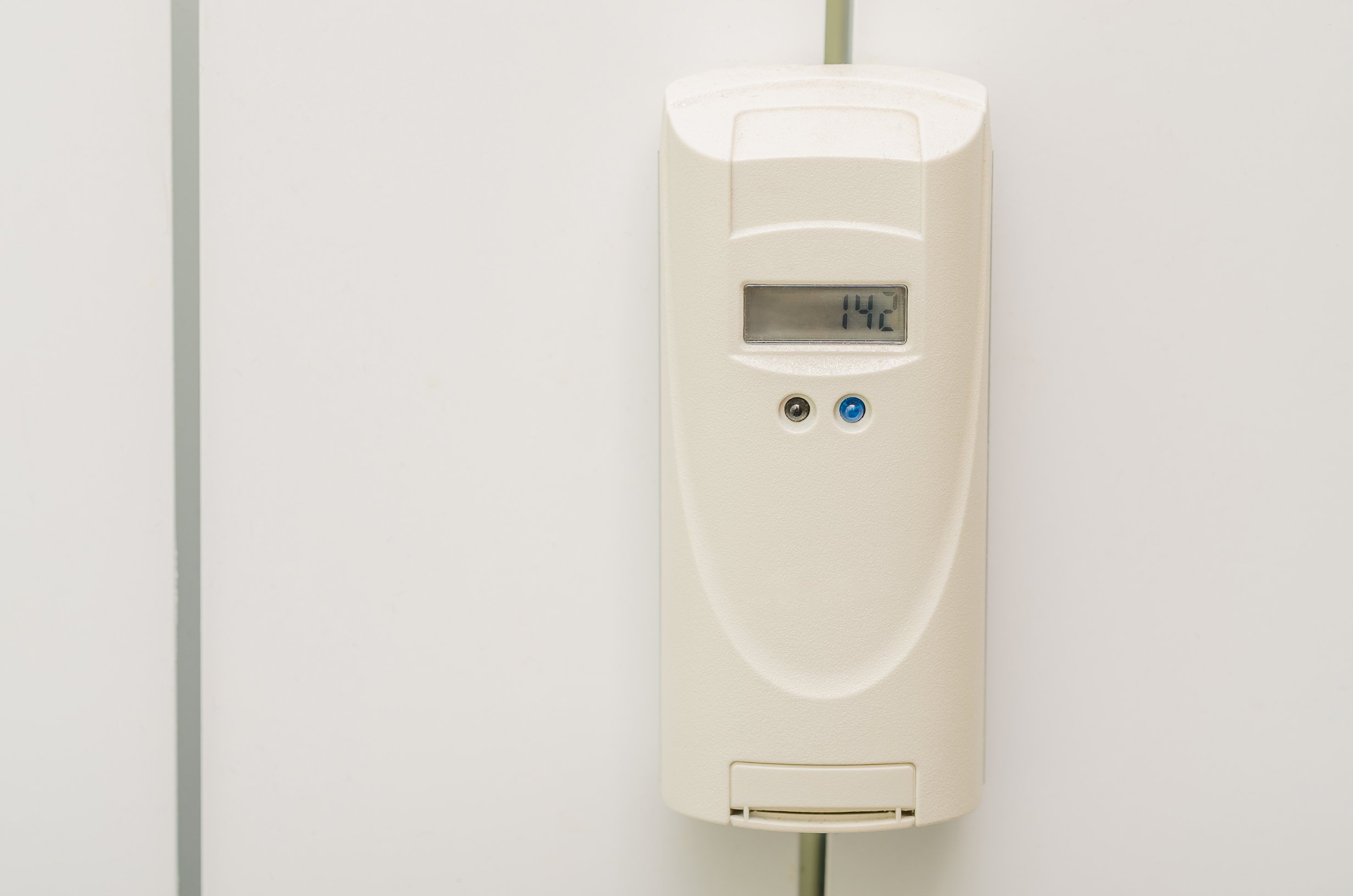
How to read heat cost allocators
Heat allocators are devices used to calculate the thermal energy consumption of individual housing units within a condominium. Let's discover together how they work and how to read the data they collect, also to save on heating costs.
How do you read the allocators on the radiators?
The heat allocator is a counter placed on radiators in a house. They are found in apartment buildings with centralised heating.
With heat allocators, it is possible to record the individual energy consumption of each apartment to accurately determine the heating costs for each tenant.
Modern allocators typically have a display from which to read the collected data, usually by pressing a small central button on the front of the device. Data typically reported include:
- current consumption;
- previous consumption;
- annual consumption.
The total consumption of a single housing unit should be calculated based on the values expressed by all the heat allocators in the condominium apartments.
New models are designed so that data can be easily accessed by tenants, allowing them not only to monitor energy consumption but also to more accurately track the costs incurred. It is recommended to check once a month during the heating system's operating period.
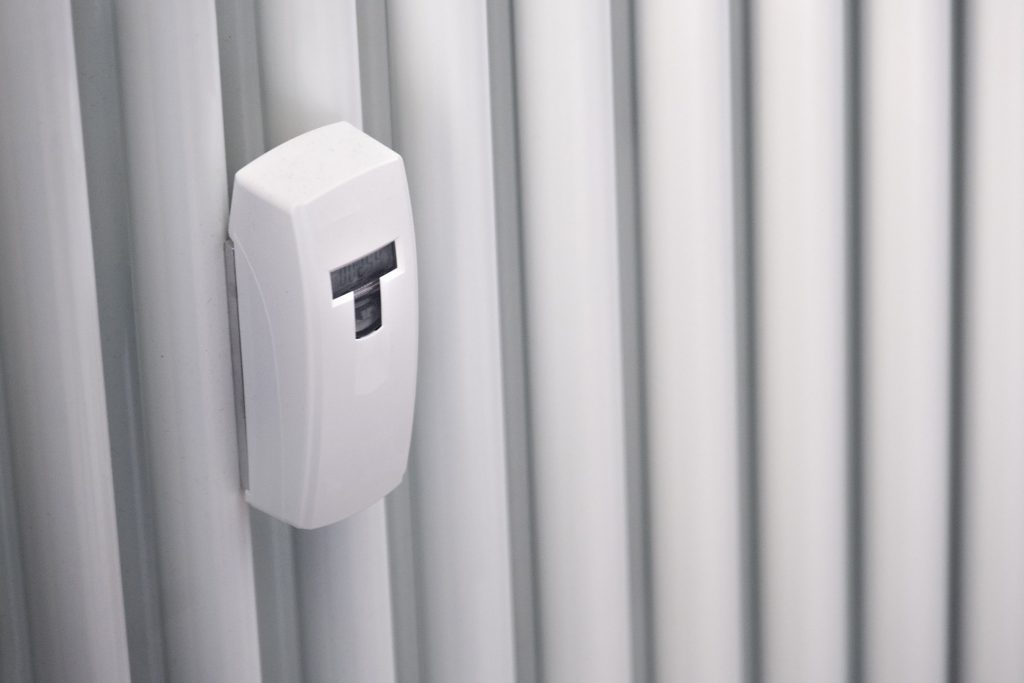
How is consumption calculated by heat cost allocators?
Heat cost allocators are useful for assessing radiator consumption and therefore intervening if it becomes apparent that it can be contained, with benefits on heating expenses.
The calculation operation takes into account the coefficient to be used to determine the amount to be paid by each tenant. Radiators have certain characteristics that affect how much heat they emit when active, including:
- the material they are made of;
- the number of heating elements;
- their size.
The coefficient assigned to each radiator is multiplied by the number recorded for each radiator, resulting in the consumption value.
The structure of common heat allocators is very simple and makes it understandable how consumption is calculated.
A conductive material plate is placed on the back of the device. When this plate is placed on the radiator, it determines its temperature.
Some allocators record the temperature using a rear bulb.
The heat emitted by the radiator causes the liquid in the bulb to evaporate: the consumed energy is determined by measuring the level of evaporation.
At the front of the device is a sensor that constantly records the room temperature. By detecting and recording the two temperatures (radiator and room), the allocator can calculate the differences and sum them over time.
When the heat allocators are installed, they are calibrated taking into account the actual thermal power of the radiator.
The parameters are not modifiable: the allocator is in fact integrated with an anti-tampering sensor. If tampered with, it locks and uses the pre-set parameters, in addition to signalling the tampering attempt.
Newer allocators have a Wi-Fi system for transmitting data to the server of the external company that installed them: therefore, the reading mode can be done remotely. Traditional allocators, on the other hand, require manual checking, so it is necessary for the operator to conduct on-site inspections.
How to read the numbers on thermostatic valves?
While heat allocators allow tenants to analyse the contribution of each radiator to the total energy consumption and, consequently, heating costs, thermostatic valves enable further economic savings by appropriately managing the heat output of a radiator in different rooms of the house.
When the heating system turns on, the heat emitted by the radiator may vary in different rooms (where, for example, daily activities are more likely to be carried out) and may be lower in those rooms that are not "lived" for several hours during the day.
Traditional manual thermostatic valves have a scale of values ranging from 0 (indicating off) to 5. Each value corresponds to a specific temperature:
- Level 1 is around 53.60 ° F;
- Level 2 rises to about 60.80 °F;
- Level 3 reaches approximately 68° F;
- Level 4 increases to 75.20° F;
- Level 5 reaches around 77° F;
- The snowflake symbol indicates anti-freeze protection.
These values do not directly translate into the temperature of the room where the radiator is located. We should take into considerations factors such as:
- the dimensions of the room;
- the effectiveness of window insulation to contain heat loss;
- the presence of furniture that may obstruct heat diffusion if placed in front of or near the radiator;
- the condition of the radiator, which should be regularly maintained and cleaned;
- the formation of any air bubbles that hinder the regular flow of hot water inside.
These are considerations to always keep in mind to avoid excessive heating expenses while maintaining a comfortable thermal environment.

How to save on bills with thermostatic valves?
On one hand, there is the heat allocator that advises the user whether the radiator's energy consumption is suitable for daily needs. On the other hand, there are thermostatic valves that regulate the radiator’s heat flow. Smart valves add value to this combination of devices.
The strength of smart thermostatic valves lies in their ability to ensure precise heating management, resulting in cost savings.
They are a home automation tool that allows users to intervene at any time by setting values with a simple click from the application installed on their mobile phone. Smart valves are connected to the Wi-Fi network for remote monitoring and immediate notifications to the user, such as detecting an open window in the room. Heat delivery is thus interrupted for a predetermined period, preventing heat loss that would significantly impact expenses.
The temperature ranges set for each room's radiator are not expressed in numbers but with LED colours:
- Blue, for example, indicates a range between 53.60° F and 59° F;
- Light blue between 60.80° F and 66.20° F;
- Green between 68° F and 71.60° F;
- Orange between 73.40° F and 77° F;
- Red between 78.80° F and 89° F.
The most efficient models of smart valves also have a manual lock setting to prevent accidental manipulation during cleaning or by children.
Other articles
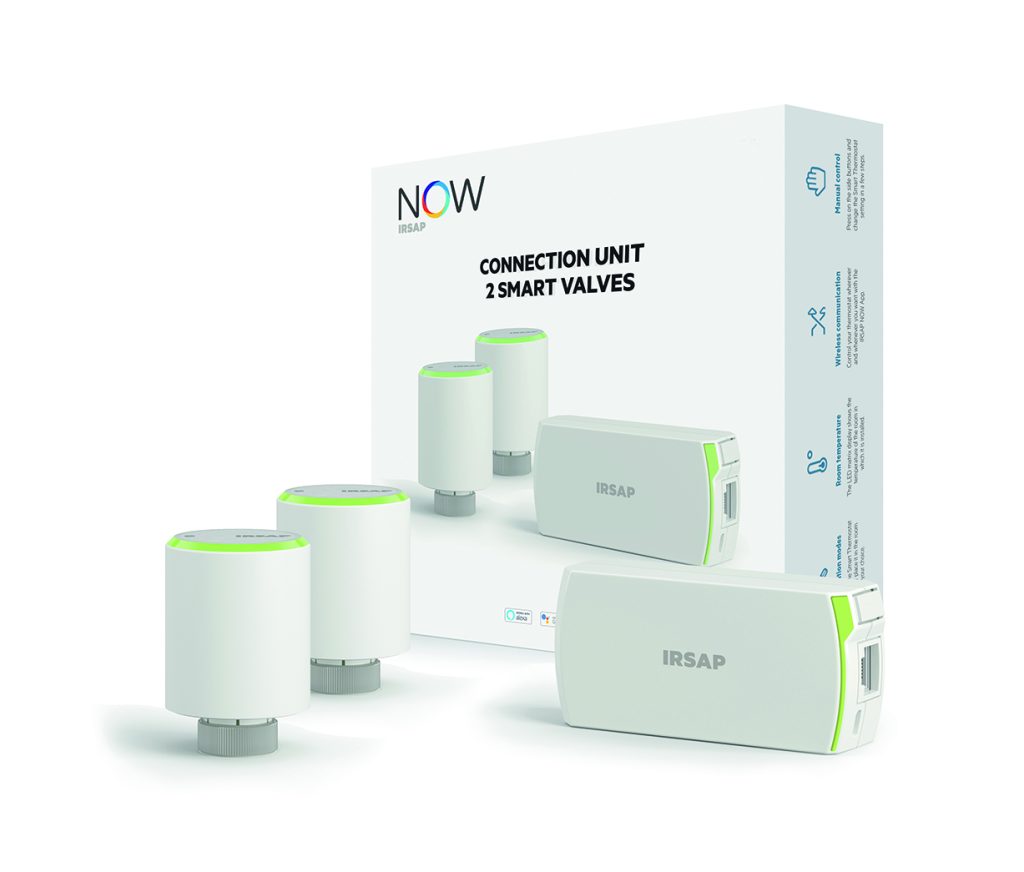
Kit Smart Valve
The IRSAP NOW smart thermostat valve kit is ideal to start experiencing home comfort with smart heating. With IRSAP NOW Smart Valves you control the temperature from wherever and whenever you want via smartphone.
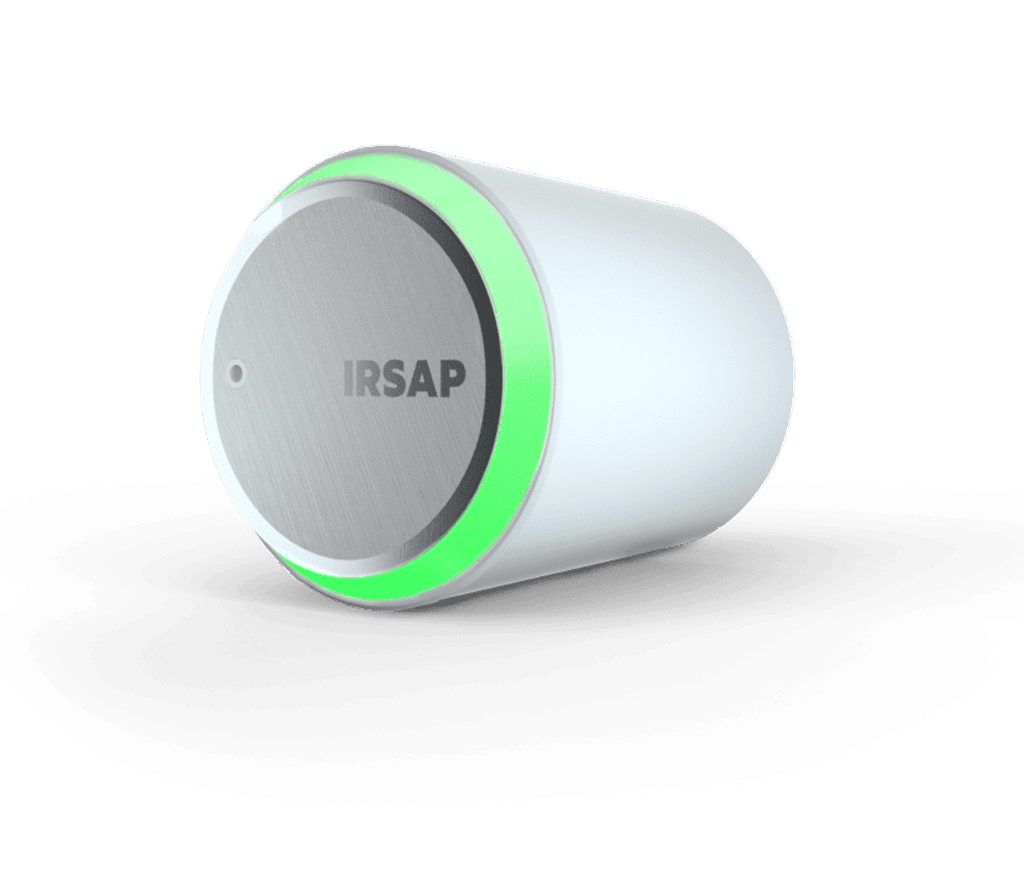
Smart Valve
With IRSAP NOW Smart Valves you control the temperature intelligently from wherever and whenver you want via smartphone.
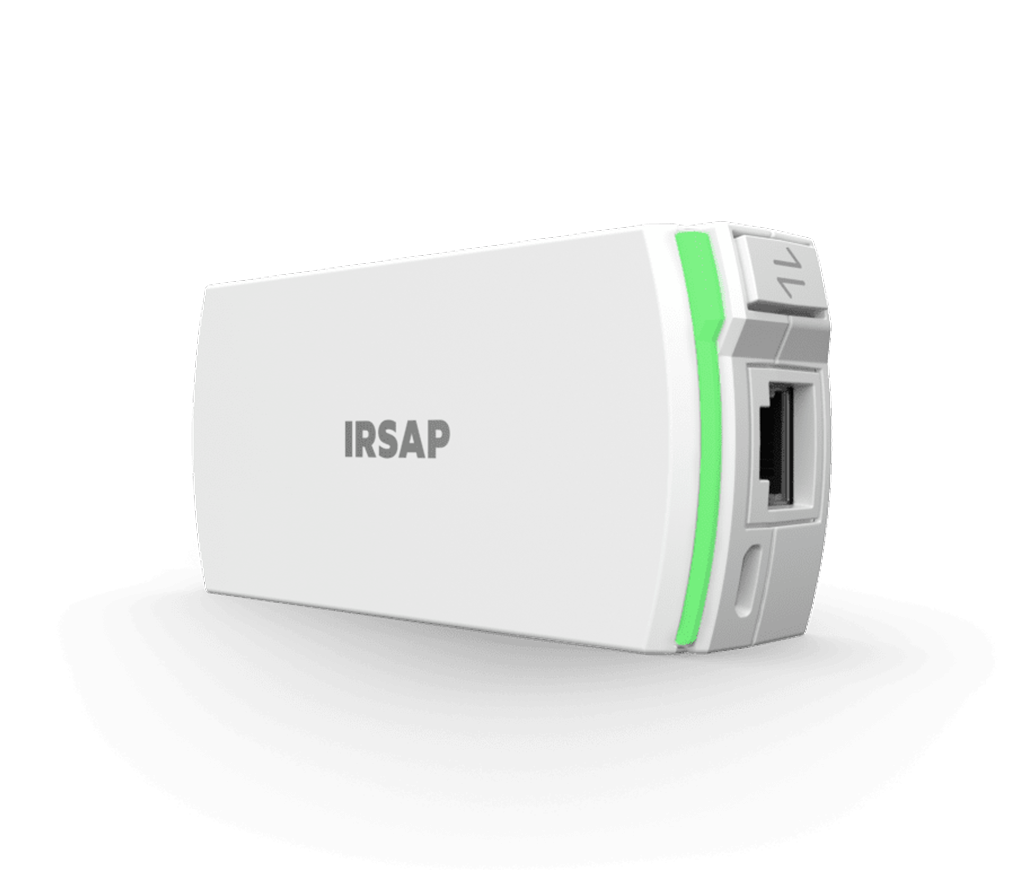
Connection Unit & Repeater
The Connection Unit is connected to your home router and is indispensable for controlling all the other devices in the system from wherever and whenever you want directly from your smartphone.






